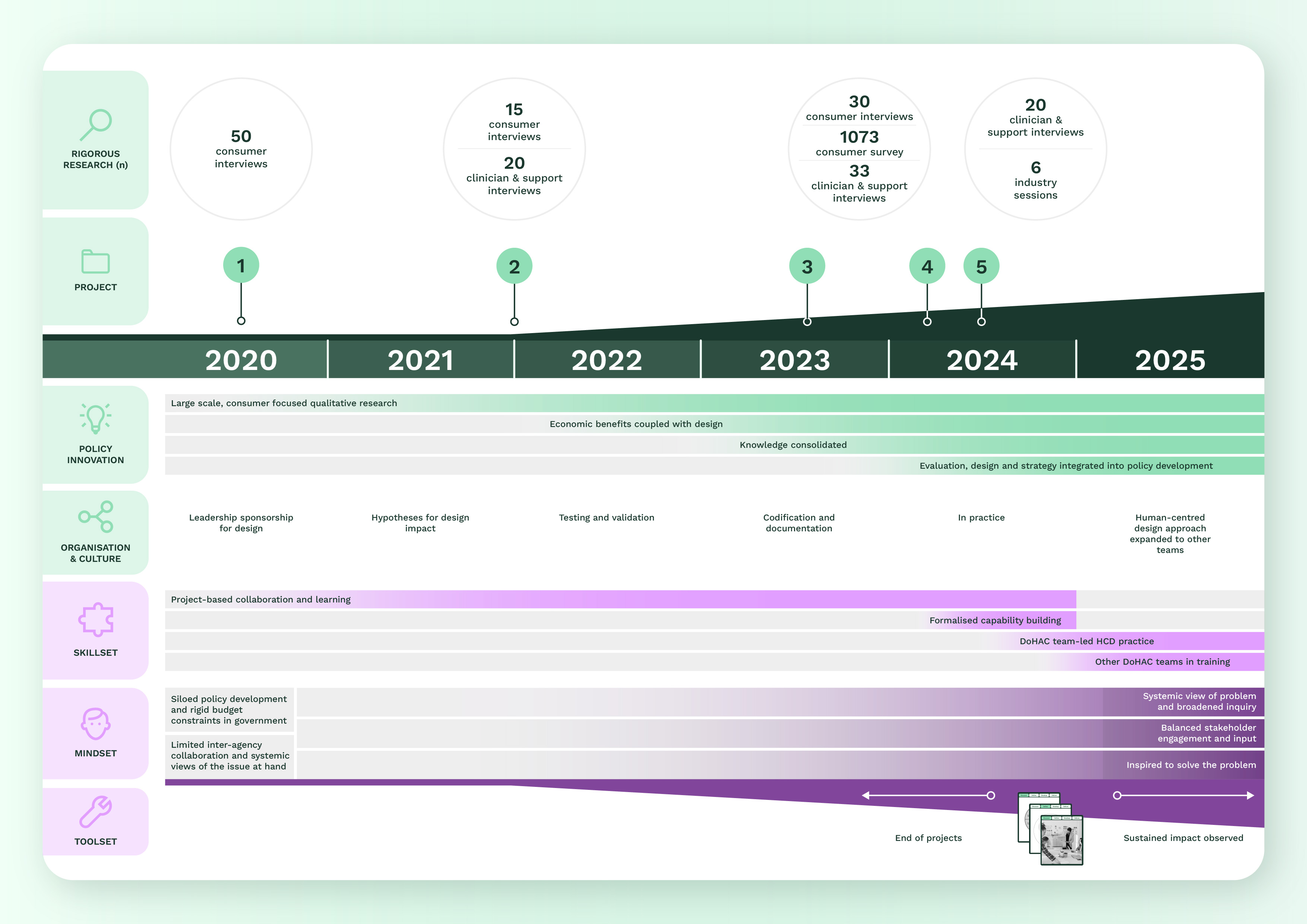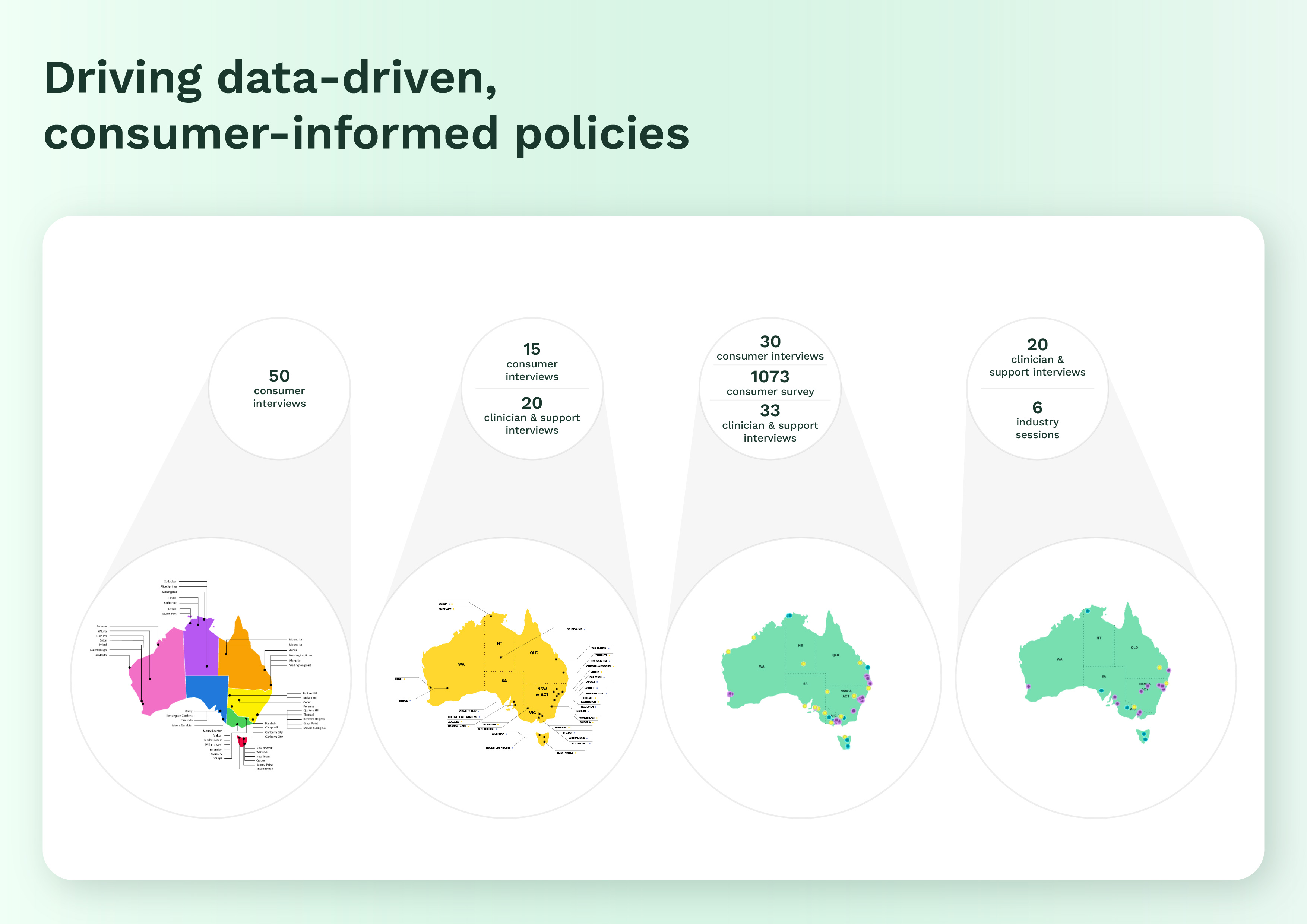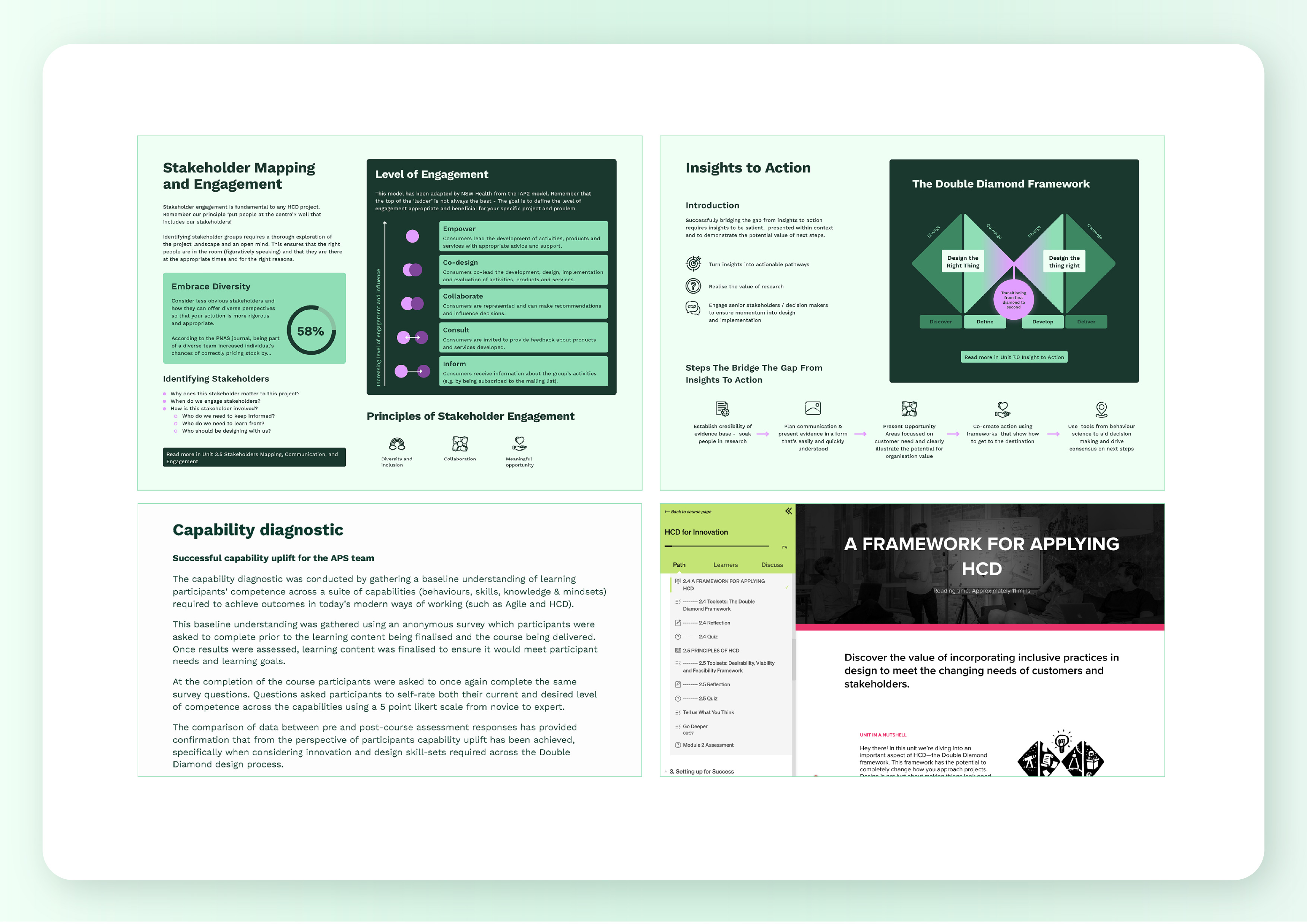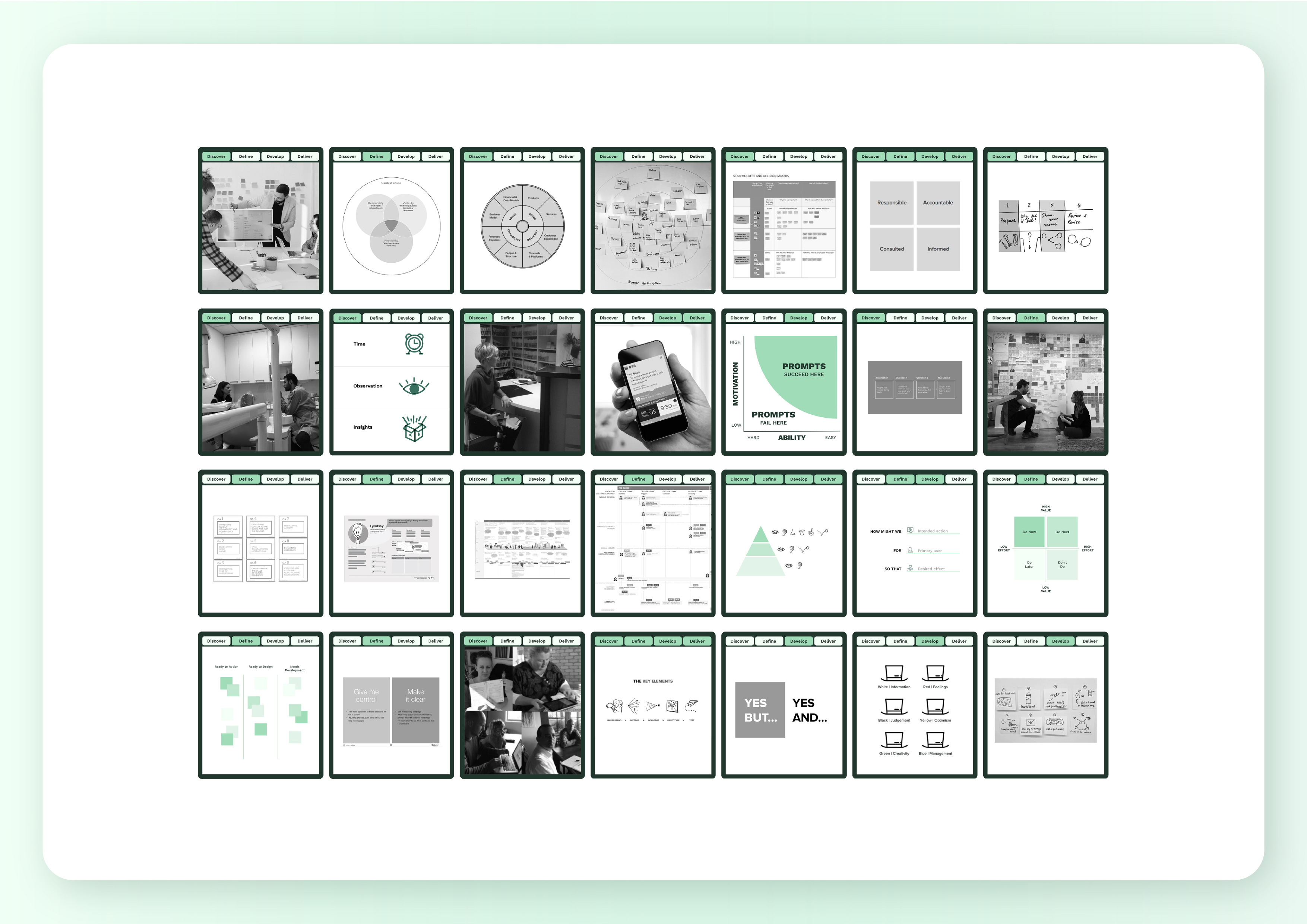Making It Stick: Five Years of Institutional Capability-Building

-
2025
-
Policy Design
Designed By:
Designed In:
Australia
Over five years, five digital health projects reshaped government decision-making, proving the transformative power of human-centred design. In partnership, DoHAC and Tobias cultivated internal design capability, building a shared language, skillset, toolset, and a mindset that’s now in practice and empowers policymakers across the branch to drive data-driven, consumer-informed policies.





